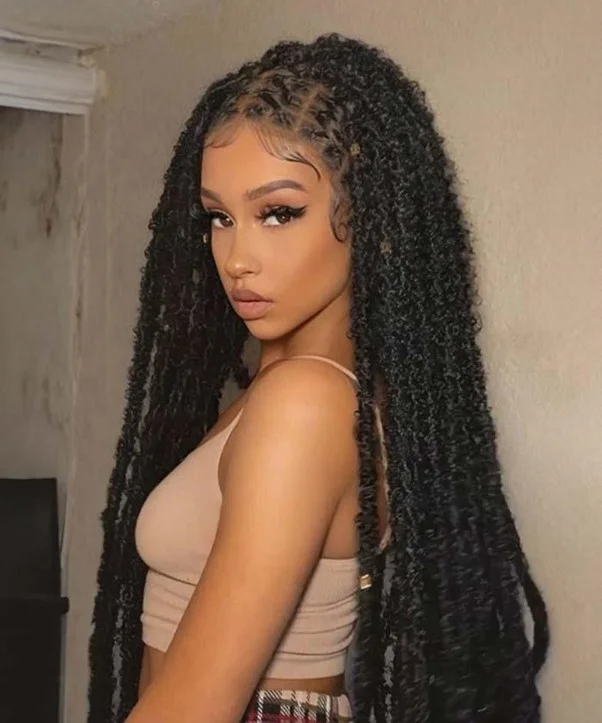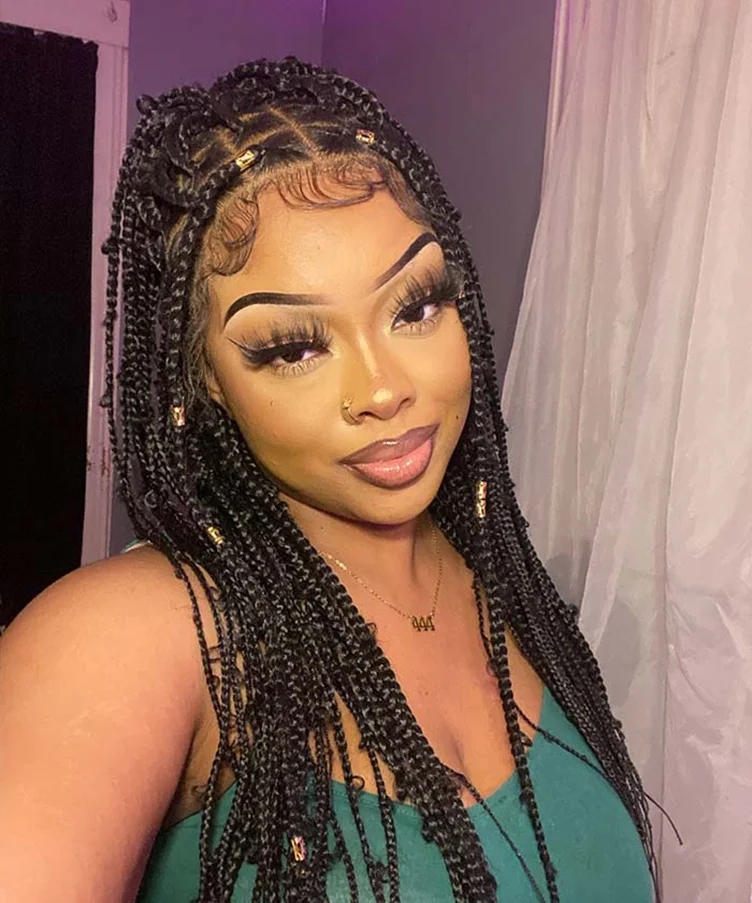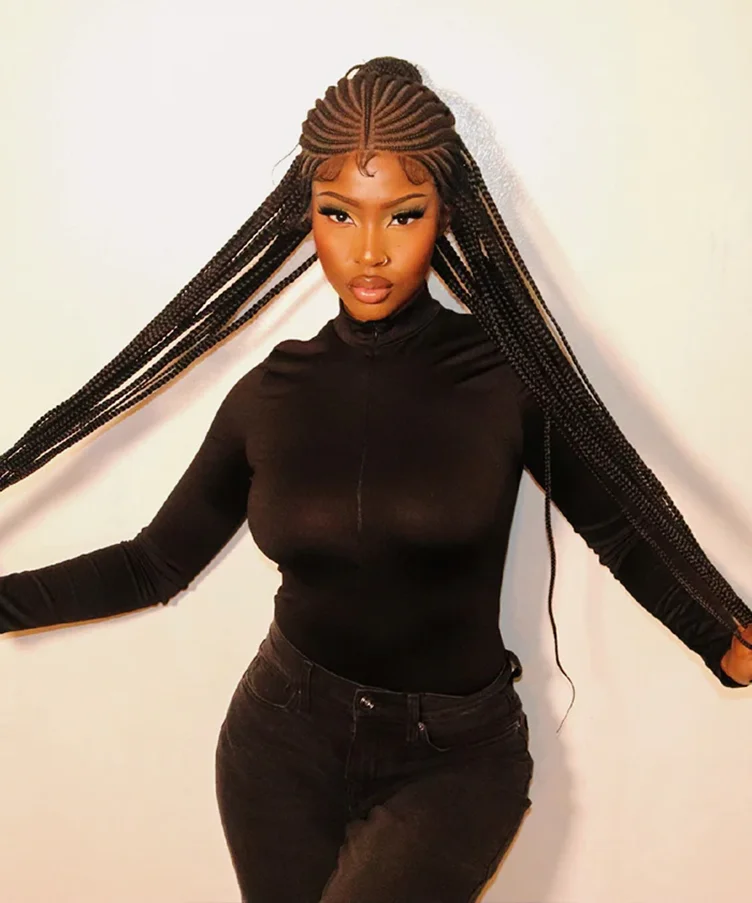As I gaze into the mirror admiring my newest set of long, thin braids embellished with cowrie shells, I’m reminded of just how much tribal braids communicate beyond fashion. This intricate style speaks a language of its own, conveying meaning and identity deeply rooted in cultural history. For many black women today, including myself, braided hairstyles like these “tribal braids” provide a means of honoring ancestry and expressing the complexities of both past and present.
I recall the first time I sat between my mother’s knees as a young girl, squirming impatiently as she gently parted my thick hair into sections. Her skilled hands moved with practiced rhythm, under and over, under and over, as she wove my short locks into tight cornrows. I felt the occasional tug but loved the closeness of our bond during these sessions. The geometric precision of the cornrows was beautiful to me. My mother called them “tribal braids,” a phrase I came to associate with the pride in my emerging black identity.
Braids as Cultural Connection
Decades later, I still feel that resonant pull to braided styles as both a stylistic statement and a cultural connection. Now though, I opt for long, sculptural looks featuring braids that cascade far down my back. Perhaps it’s a subconscious desire to reclaim the elaborate braided crowns and coiffures of African nobility and royalty throughout history. Or an urge to infuse my modern lifestyle with an age-old sense of regality and ceremony found in braiding traditions. I’ve come to see braided hairstyles as far more multidimensional than mere fashion choices. They speak volumes about heritage, womanhood, belonging, craft, resilience and above all, beauty.
Braids as Self-Expression
Beauty originates from our textured hair and melanated complexion rather than being defined by Eurocentric standards. The simple social tradition of braiding has inherent beauty. Beauty is a creative way of expressing oneself and one’s ancestry. This fuller understanding resonated profoundly when I first experienced longer braided styles like box braids and goddess braids as an adult. Choosing these looks felt like diving deeper into my identity, each braid reaffirming both individuality and community. I recall excitedly browsing braided hairstyles online, amazed by the diversity of colors, textures, and patterns modern braiders incorporated. No two heads of braids need to look identical. I booked my first box braid appointment with a vision of how I wanted to present myself to the world.
The Transformative Power of Braids
I entered the African braiding salon, inhaling the rich aromas of hair products mixed with women’s laughter and gossip floating on the air. I joined the sisterhood, bound not just by braids but by shared understanding. As the stylist sectioned and extensioned my hair, the hypnotic motions eased my chatter. She patiently guided my strands into neat rows of slender braids, occasionally meeting my eyes in the mirror and smiling reassuringly. After hours of meticulous braiding, I emerged transformed externally yet fundamentally still myself. Newly adorned with box braids but intrinsically the same spirited black woman as before. That’s the true magic of braids – their ability to help reveal our inner essence to the outside.
Since that inaugural box braiding experience, I’ve continued to incorporate braided styles into my self-expression. Goddess braids styles in particular have become a signature look I turn to for special occasions requiring elegance and confidence. The free-flowing quality projects natural beauty and strength. I love experimenting with different colors and embellishments to make each set of goddess braids feel unique. They help embody my mood or mindset at the time – radiant when adorned with gold cuffs or subdued when simply braided in black. Do our choice of hairstyles actually reflect inner thoughts and feelings otherwise left unspoken? Can the language of braids give voice to our silent musings?
I’ve also grown to like braided looks on other black women, as I’m always amazed with how different braiding can be to accentuate each person’s unique features and personality. I remember seeing an older sister on the bus with grey hair braided into a crown atop her head, looking every inch the wise village elder. Carefully braided locs on the young barista at my coffee shop gave her an air of artsy quirkiness. And I’ll never forget watching awestruck as a competing dancer at my niece’s recital moved with astonishing intricacy, her long white knotless braids like whipping beams of light punctuating each precise gesture.
Knotless braids themselves represent innovation linked to tradition, much like our existence as modern black women. By creating the illusion of braids without visible knots, the style manages to feel both seamless and sculptural. When I myself tried knotless braids, I was amazed by how lightweight and free they felt. The braiding process proved quicker as well without knots to secure at the end of each strand. At times, maintaining cultural roots while navigating contemporary spaces can feel knotless – not quite visible solidity but still an intact anchoring. Our hair so naturally tells the story behind our faces.
Braids as an Evolving Language
As an avid braid-wearer, I’ve come to see braided hairstyles as their own evolving language, one we inherit from past generations of inventive, expressive women. Over time, our braids changed from being descriptive to being decorative to being experimental. Our braided hair, whether it be twisted, knotted, curled, or colored, represents imagination, fortitude, and the depth of Black culture. The diversity of styles conveys identity, attitude, and mood in addition to fashion. Hair stylists use our heads as their canvases, repurposing tradition to create modern self-portraits. We authors can write our next evolution with every new braided style we create, each strand expressing a different story.




